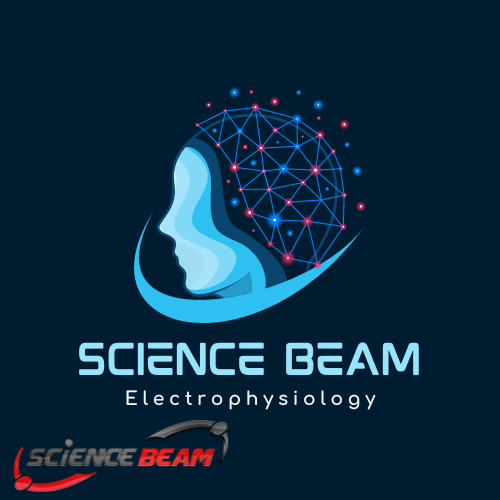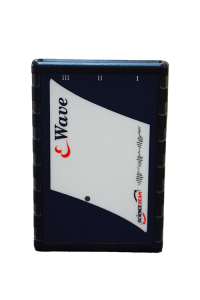what is a neurofeedback device?
Neurofeedback, also known as EEG (electroencephalogram) biofeedback, involves monitoring and providing feedback on brainwave activity. A neurofeedback device is a tool designed for this purpose, typically consisting of sensors to measure electrical activity in the brain and a feedback system to convey this information to the user.
Here’s a basic overview of how neurofeedback works:
- Measurement: Electrodes or sensors are placed on the scalp to measure electrical activity in the form of brainwaves. The most common brainwaves are categorized as delta, theta, alpha, beta, and gamma.
- Feedback: The neurofeedback device processes the collected brainwave data and provides feedback to the user in real-time. This feedback can take various forms, such as visual or auditory signals.
- Training: Users are encouraged to modify their mental state consciously to achieve a desired pattern of brainwave activity. For example, they may be trained to increase or decrease specific types of brainwaves associated with attention, relaxation, or other cognitive states.
- Reinforcement: The neurofeedback device typically provides positive reinforcement when the user successfully achieves the desired brainwave pattern. This reinforcement helps the user learn to control their brain activity over time.
Neurofeedback has been explored and applied in various contexts, including:
- Cognitive Enhancement: Some individuals use neurofeedback to improve cognitive functions such as attention, memory, and focus.
- Stress and Anxiety Management: Neurofeedback may be used as a tool to help individuals manage stress and anxiety by promoting relaxation and reducing overactive brainwave patterns.
- ADHD Treatment: Some research suggests that neurofeedback can be used as a complementary approach in the treatment of Attention-Deficit/Hyperactivity Disorder (ADHD).
- Peak Performance Training: Athletes and professionals in high-pressure fields may use neurofeedback to enhance their performance and manage stress.

It’s important to note that while there is some evidence supporting the efficacy of neurofeedback in certain applications, the field is still evolving, and more research is needed to fully understand its potential benefits and limitations. If considering neurofeedback, it’s advisable to consult with a qualified healthcare professional or a trained neurofeedback practitioner.
Application of neurofeedback device
Neurofeedback devices find applications in various fields, and their use continues to expand as researchers explore new possibilities. Here are some common applications of neurofeedback devices:
- Cognitive Enhancement:
- Improving attention, focus, and concentration.
- Enhancing memory and cognitive function.
- Stress and Anxiety Management:
- Reducing symptoms of stress and anxiety.
- Promoting relaxation and stress resilience.
- ADHD Treatment:
- Complementary treatment for Attention-Deficit/Hyperactivity Disorder (ADHD).
- Helping individuals improve attention and impulse control.
- Mood Disorders:
- Supporting the treatment of mood disorders such as depression and bipolar disorder.
- Promoting emotional regulation.
- Sleep Disorders:
- Addressing sleep-related issues by influencing brainwave patterns associated with sleep.
- Traumatic Brain Injury (TBI) Rehabilitation:
- Assisting in the rehabilitation process for individuals recovering from traumatic brain injuries.
- Epilepsy Management:
- Some studies suggest that neurofeedback may be used as a complementary approach to manage epilepsy by influencing brainwave patterns.
- Peak Performance Training:
- Enhancing performance in sports, arts, and other competitive or high-pressure activities.
- Substance Abuse Treatment:
- As part of a comprehensive treatment plan for substance use disorders.
- Neurorehabilitation:
- Supporting rehabilitation after neurological injuries or surgeries.
- Biofeedback for General Wellness:
- Some individuals use neurofeedback as a tool for general wellness and stress reduction.
It’s important to note that while neurofeedback shows promise in these areas, research is ongoing, and the effectiveness of neurofeedback can vary from person to person. Additionally, neurofeedback is often used as part of a comprehensive treatment plan and should be administered by trained professionals.
If considering neurofeedback, it’s advisable to consult with healthcare professionals, such as psychologists, neurologists, or trained neurofeedback practitioners, who can assess individual needs and guide the use of neurofeedback for specific applications.
How does the neurofeedback device work?
Neurofeedback devices work by monitoring and providing feedback on the electrical activity of the brain, which is measured using electroencephalogram (EEG) technology. The process typically involves several key steps:
- Sensor Placement: Electrodes or sensors are placed on specific locations on the scalp to detect electrical activity generated by the brain. The number and placement of electrodes can vary depending on the specific goals of the neurofeedback training.
- Signal Acquisition: The electrodes capture the electrical signals produced by neurons in the brain. These signals are amplified and processed to identify different types of brainwaves, such as delta, theta, alpha, beta, and gamma waves.
- Real-Time Monitoring: The neurofeedback device processes the EEG signals in real time and provides immediate feedback on the user’s brainwave activity. This feedback can take various forms, such as visual displays on a computer screen, auditory tones, or other types of stimuli.
- Feedback Presentation: The feedback is presented to the user in a way that allows them to understand their current brainwave patterns. For example, the user may see a graphical representation of their brainwave activity, with the goal of achieving a specific pattern associated with the desired mental state.
- Training Protocols: Users are then guided through training protocols designed to help them consciously influence their brainwave activity. This may involve activities such as focusing on specific mental tasks, practicing relaxation techniques, or engaging in activities that promote the desired brainwave patterns.
- Reinforcement: Positive reinforcement is provided when the user successfully achieves the target brainwave pattern. This reinforcement can be in the form of visual or auditory cues, signaling that the brain is in the desired state. Over time, the individual learns to self-regulate and maintain the desired brainwave patterns without external feedback.
It’s important to note that the specific protocols and methods used can vary based on the goals of the neurofeedback training and the individual’s needs. Additionally, the effectiveness of neurofeedback can depend on factors such as the skill of the practitioner, the individual’s responsiveness to the training, and the consistency of the training sessions.
Neurofeedback is often used as part of a comprehensive treatment plan and is administered by trained professionals, including psychologists, neurofeedback practitioners, or other healthcare providers.

Number of neurofeedback sessions
The number of neurofeedback sessions required can vary widely depending on the individual’s goals, the specific condition being addressed, and how quickly the individual responds to the training. Neurofeedback is often considered a gradual process that requires multiple sessions for optimal results. Here are some general considerations:
- Frequency of Sessions: Neurofeedback sessions are typically scheduled regularly, such as once or twice a week. The frequency can be adjusted based on the individual’s needs and the practitioner’s recommendations.
- Total Number of Sessions: The total number of sessions can range from a few sessions to dozens, or even more. Some individuals may experience benefits after a relatively short period, while others may require more extended training.
- Condition Being Treated: The number of sessions can depend on the specific condition or symptoms being addressed. For example, individuals seeking neurofeedback for stress management may have a different treatment plan than those using it for attention issues or sleep disorders.
- Individual Responsiveness: People vary in their responsiveness to neurofeedback. Some individuals may notice improvements after just a few sessions, while others may require more time to see significant changes.
- Consistency and Compliance: Consistency in attending sessions and following the recommended training protocols can impact the effectiveness of neurofeedback. Individuals who are diligent in participating in sessions and practicing the techniques outside of sessions may experience better results.
- Assessment and Adjustments: The neurofeedback practitioner may periodically assess progress and make adjustments to the training protocol based on the individual’s response. This flexibility allows for a personalized approach to address specific needs.
It’s crucial to understand that neurofeedback is often used as part of a comprehensive treatment plan, and results can vary from person to person. Additionally, the effects of neurofeedback may continue to unfold after the completion of formal training sessions.
If you are considering neurofeedback, it’s advisable to consult with a qualified healthcare professional or a trained neurofeedback practitioner. They can conduct an assessment, discuss your specific goals, and provide personalized recommendations regarding the number and frequency of sessions needed for your particular situation.
Conclusion about the neurofeedback device
In conclusion, neurofeedback devices represent a technology that monitors and provides feedback on the electrical activity of the brain. These devices have found applications in various fields, with potential benefits in areas such as cognitive enhancement, stress and anxiety management, ADHD treatment, mood disorders, and more. The general process involves the placement of sensors on the scalp to measure brainwave activity, real-time monitoring, and the presentation of feedback to users, who are then guided through training protocols to influence their brainwave patterns.
Key points to consider:
- Applications: Neurofeedback devices have been applied in diverse contexts, ranging from mental health treatment to performance enhancement and general wellness.
- Individual Variability: The effectiveness of neurofeedback can vary among individuals, and the number of sessions needed may depend on factors such as the specific condition being addressed, individual responsiveness, and the consistency of training.
- Comprehensive Approach: Neurofeedback is often used as part of a comprehensive treatment plan and is administered by trained professionals, including psychologists, neurofeedback practitioners, or other healthcare providers.
- Ongoing Research: While there is evidence supporting the efficacy of neurofeedback in certain applications, research is ongoing, and the field continues to evolve. More studies are needed to fully understand its potential benefits and limitations.
- Personalized Treatment: The success of neurofeedback often relies on a personalized approach, with practitioners making adjustments to the training protocol based on individual responses and goals.
If considering neurofeedback, it’s essential to consult with healthcare professionals to assess whether it’s an appropriate option for your specific needs. Overall, neurofeedback devices represent a promising avenue in the broader field of brain-based interventions, offering the potential for individuals to learn self-regulation and optimize their cognitive and emotional well-being.


